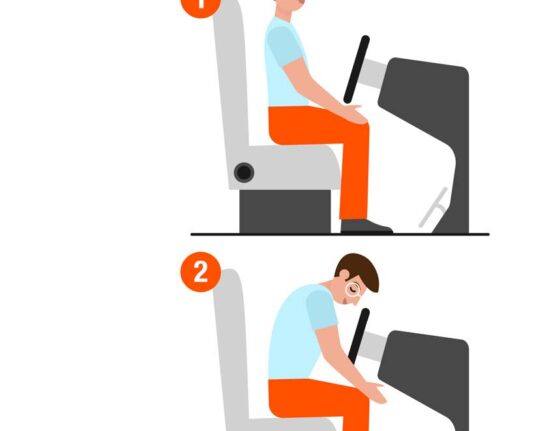Esther Ekhart from EkhartYoga.com guides us through this month’s sequence.
Feel strong and open and radiate your energy out in all directions with this powerful Vasisthasana sequence, which opens up the hips, hamstrings, shoulders and sides of the body and creates all over strength and stability. Remember to breathe into the stretches and use the modifications described above if you need to. Most of all enjoy it!

Supta Padangusthasana
A)
• Lie on your back and draw the left knee into your chest.
• Hook your thumb, index and middle finger around the big toe (or loop a strap around the arch of the foot).
• Keep the ankle flexed and slowly extend the left leg upwards until the arms are straight, keep the shoulders relaxed.
• Extend through both heels, pressing the top of the right thigh down. Bend the right leg if the stretch is too strong.
B)
• Rotate the left leg out and lower the leg towards the floor on your left side. Keep the right hip grounded.
• Stay in each variation for 5 breaths – repeat on the other side.

Gomukhasana
• Stretch your arms out to the sides, then internally rotate your left shoulder so your thumb points downwards.
• Sweep that same arm behind your back, walking your hand up between your shoulder blades, palm facing outwards.
• Stretch the right arm up, rotate the palm so it’s facing behind you and bend the elbow to reach down to clasp the fingertips of the left hand. (If the fingertips don’t meet, clasp a belt or scarf).
• Extend through the top and bottom elbow and soften the lower ribs down.
• Stay in the pose for a few breaths.
• Release the arms and repeat on the other side.

Phalakasana
• From a tabletop position, with your hands directly under your shoulders, curl the toes of the right leg and extend it behind you.
• Keep the hips low and extend the left leg, coming into Plank.
• Draw the lower belly in and upwards and extend the tailbone towards the heels.
• Press into the hands as if you’re pushing the floor away from you and extend the chest slightly forward, shoulders back.
• Press the thighs towards the ceiling and extend the crown of the head forwards and the heels back. Stay here for a few breaths.

Vasisthasana variation
• From a tabletop position, extend your left leg back, toes curled.
• Turn your left heel to the right, coming onto the inner edge of your left foot.
• Ground the sole of the left foot and bring your left hand onto your left hip, turning your chest to the left, as you do so.
• Draw the hips points up, extend the tailbone towards the left heel and ground the outer edge of the left foot into the mat.
• Extend the left hand up to the ceiling and shine the heart upwards.
• Stay here for a few breaths and repeat on the other side.

Trikonasana
• Step your legs out wide lengthways along the mat, toes pointing forwards, thighs drawing upwards.
• Turn your left foot out 90 degrees, so that your left heel is roughly in line with the instep of your right foot.
• Stretch your arms out parallel to the floor and lean the torso to the left, fingertips reaching towards the front edge of the mat.
• Lengthen both sides of the waist, outer right foot grounding down.
• Reach down to the floor, ankle or a block with your left hand, turn your chest to the ceiling and extend through the right fingertips and crown of the head.
• Stay here and breathe. Return to centre on an inhale and repeat on the other side.

Vrksasana
• From Tadasana, shift your weight into the right leg.
• Ground into the sole of the foot and bend the left knee, clasping the front of the knee or shin.
• Fix your eyes on a point in front of you and with the help of your left hand, place the sole of the left foot on your inner right thigh or calf.
• Place your hands in Namaste.
• Externally rotate your left knee, draw the outer hips in and extend the heart space upwards. Breathe…
• Repeat on the other side.

Vasisthasana with Vrksasana
• From Plank pose, make sure the shoulders are stacked slightly behind the wrists.
• Turn both heels to the right, stacking left foot on top of right.
• Take the weight into the right hand and place the left hand on the hip.
• Bend the left knee and use your left hand to help to place the sole of the foot against the inner right thigh. • Press strongly into the right hand, to help keep the hips lifted and press the inner right thigh against the sole of the left foot. Stay for a few breaths before repeating on the other side.
Utthita Hasta Padangusthasana
A)
• From Tadasana, bend your left knee and reach down the inside of your leg to grasp the big toe with your thumb and first two fingers (or loop a belt around the sole of the foot)
• Place your right hand on your waist and with the ankle flexed, slowly begin to stretch the left leg away from you.
• Extend the heel forwards and the left shoulder back
B)
• Draw the right thigh muscles up and begin to rotate the left foot out to the side.
• Breathe for a few breaths before returning the leg back to centre and down to the floor.

Vasisthasana
• From Side Plank bend your top (left) knee and reach down the inside of the thigh to grasp the big toe with your left thumb and first two fingers. Keep the gaze low for balance.
• Rotate the knee out and start to extend the sole of the foot towards the ceiling
• Keep rooting into the floor with the right hand and right foot to enable you to lift the hips even higher.
• Radiate your energy out through all directions and shine your heart up to the sky!
• Stay here for a few breaths before returning to side plank and repeat on the other side.






Leave feedback about this